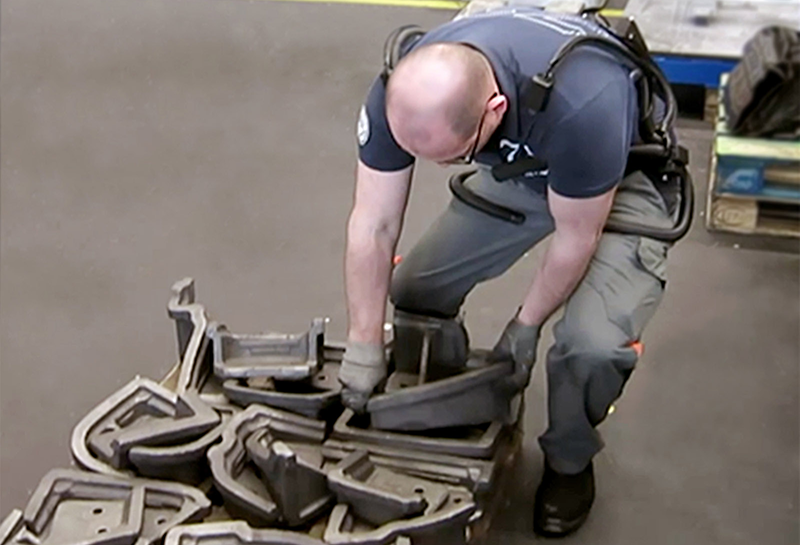The excruciating pain from back injuries can be long-lasting. Back problems are common among workers working at factories, construction sites, and farms. According to the federal Bureau of Labor Statistics, the back injuries of more than 1 million workers account for nearly 20% of all injuries and illnesses in the workplace. Workplace injury costs billions of dollars yearly.
Related MATE Exoskeleton by Comau Boosts Workers’ Strength and Performance without Using Electric Power
Scientists are regularly developing various wearable devices to reduce workplace injury. Exoskeletons can help, but they essentially shift the load from one part of the body to another. Powered exoskeletons, on the other hand, have limited functionality and are very expensive.
Researchers at the Fraunhofer Institutes for Production Systems and Design Technology IPK and for Reliability and Microintegration IZM in Berlin have now developed ErgoJack – a smart soft orthosis – to relieve back strain and encourage workers to execute strenuous movements in a more ergonomic way, says a press release.
“Our soft robotic upper-body orthosis’ unique selling point is its real-time motion analysis. Specially developed algorithms based on machine learning and AI enable the ergonomics to be analyzed. This sets this orthosis apart from commercially available exoskeletons. The latter are wearable robots that, inherently to their functional principles, amplify all types of movements – even unergonomic ones – and merely divert the load placed on the wearer from an overloaded part of the body to a less taxed area,” says Dipl.-Ing. Henning Schmidt, a scientist at Fraunhofer IPK.
The new orthosis developed by IPK uses motion analysis to distinguish between ergonomic and unergonomic movements. A vibrating alarm alerts the wearer about an impending danger when they adopt posture or perform movements that are detrimental to their health.
Inertial measurement units (IMU), built into the vest compare pre-learned movement patterns with the worker’s actual movement and assess it in real time. This takes just a few hundred milliseconds. The miniaturized motion sensors are located on the shoulders, back and thighs.
The vest also features robust, miniaturized electronics, including an embedded controller, a vibration module and a rechargeable battery.
Related Ford Unveils Exoskeleton Vests Worldwide to Help Lessen Worker Fatigue and Injury
“The real-time algorithm requires complex calculations and has to be very robust, but a very small data set suffices to train the system to a new worker’s movement pattern,” says Schmidt, describing another feature that sets this system apart.
The researchers will present a prototype of this wearable soft robotics system at the joint Fraunhofer Booth C24 in Hall 17 at the Hannover Messe from April 1 to 5, 2019.













